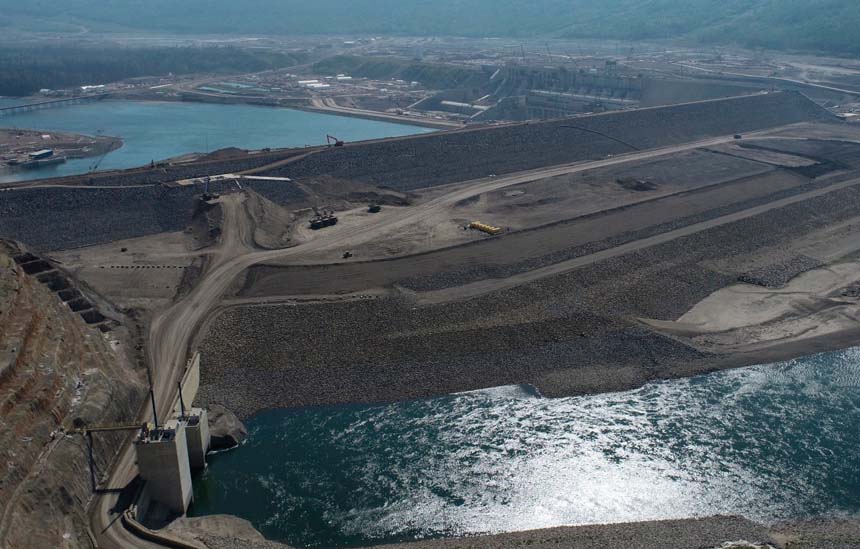- The dam, one of the largest in Canada, is 60 meters high and more than one kilometer of crowning length.
ACCIONA and its partners in the Peace River Hydro Partners consortium (PRHP) have completed the construction of the Site C dam, in British Columbia. Awarded in 2015 for €1,8 billion, it is one of ACCIONA’s largest projects in Canada.
With a crest length of more than one kilometer, the dam rose 60 meters above the Peace River (comparable to a 20-story building).
The dam fill works began in 2021. In total, more than 16 million m3 of material was used in its construction which was 100% self-performed by PRHP. Most of the material was obtained from the site while the remaining seven million tons was moved on a five-kilometer-long conveyor belt, avoiding CO2 emissions from vehicle haulage.
During construction, ACCIONA and its partners achieved records placing the roller-compacted concrete (RCC) foundation. The team reached daily RCC placement peaks of over 9,460 m3 per day.
To divert the river, the PRHP excavated two twin tunnels 800 meters long and 11 meters diameter with road-headers. The tunnels were then lined with concrete. In total, more than 100 M3 of earth was moved. In addition, half a million tons of rip-rap rock protection for the dam was produced and transported by rail from a local quarry.
The construction of the Site C dam was built in compliance with international and Canadian safety practices, enabling it to withstand natural disasters.
The PRHP construction of the earthen dam, the roller-compacted concrete dam and the diversion tunnels are part of the Site C Clean Energy Project, one of the largest infrastructure initiatives in Canada.
Once completed in 2025, this project will provide energy to a population equivalent to 450,000 homes or 1.7 million electric vehicles per year in the Province of British Columbia.
SUSTAINABLE NATURE OF THE PROJECT
The lifecycle of the infrastructure will contribute to a positive impact due to the production of renewable energy. During the construction phase, the project implemented numerous measures to reduce its carbon footprint.
Examples include the use of an Earth Movement Platform and GPS machinery tracking to optimize routes and fuel consumption, and innovative construction processes such as the use of a 5 km conveyor belt to substitute a fleet for the transportation of soil. In 2022 alone, these measures avoided the generation of more than 10,000 tons of CO2.
Site C launched in 2021 a circular economy focused project with the involvement of workforce and community. The project recycled a wider variety of materials at two different processing centers on site which generated substantial revenue that was used to fund a community investment programs.

